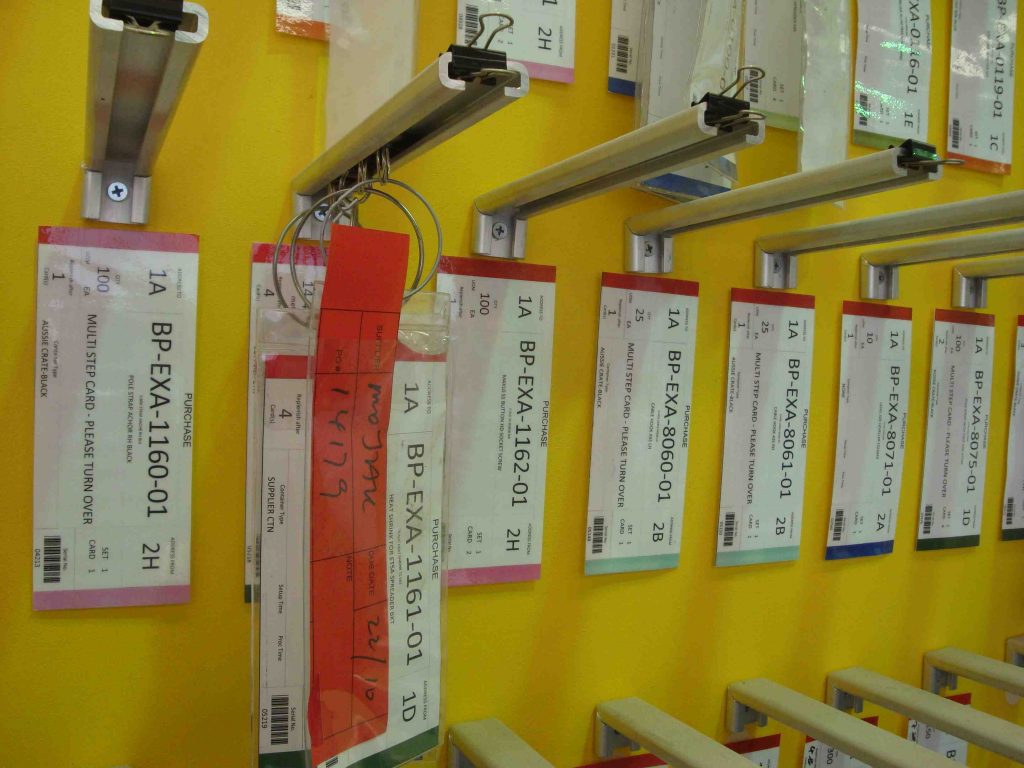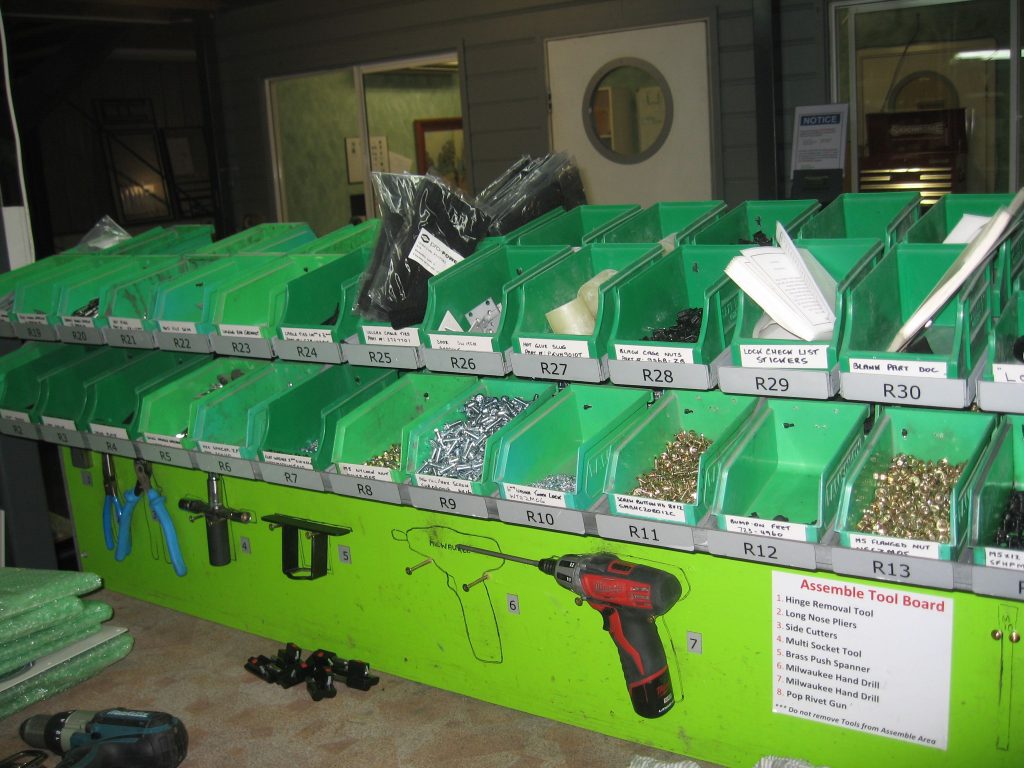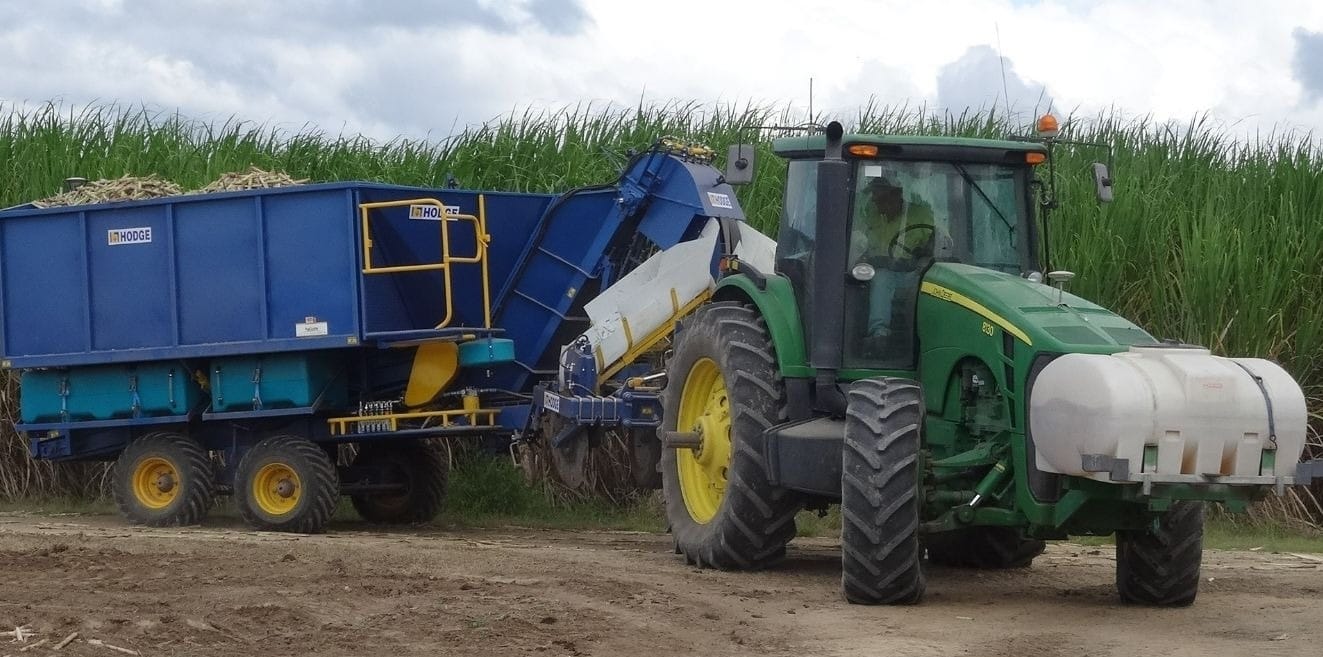Kanban is an important part of a flow, or pull, system and is a “sign” that production must act to fulfill an order.
Understanding Kanban pull systems can transform the way you manage workflow. By aligning production with actual demand, these systems reduce waste and improve efficiency.
This article delves into the mechanics of pull systems, illustrating how they optimize processes and create a more responsive and flexible working environment.
What Does A Kanban Include?
The physical kanbans can include:
- a card
- an empty square on the floor
- a box
- a trolley
- a light

In a supermarket, a card, box or trolley are the most likely types of kanbans. This will depend on the number of parts in the supermarket and their size.
Regardless of the type of kanban, each one must include enough information to understand:
- where the kanban has come from / returned to
- where the kanban needs to go to
- what is needed to be made (part numbers, qty)
Implementing a kanban system will highlight many problems in Production. Set stock levels and reorder lead times will test your initial parts analysis and production data. Audit the system regularly to check all kanbans are present and they are where they should be.
When problems arise, daily problem solving is needed to determine the short term fix and root cause. The challenge is to face these problems understanding that solving each one will help to create a more robust kanban system; it doesn’t mean that the kanban system isn’t working – it is highlighting the production fluctuations and variation that wasn’t identified in the original analysis.
4 Simple Steps for an Effective Kanban Pull System
Kanban Systems or Pull Systems of various types are now common across many industries. They are cheap, simple to operate and can lead to large cost and inventory reductions. Here are some guidelines to help make your pull system work effectively:
1. Keep the Lead Time Short and the Interval Frequent
Kanban systems (also known as pull systems) trigger the ordering of materials based on previous usage.
The longer the lead time for supply of the parts and the less frequently parts are replenished, the less successful the pull system will be. Implementing pull system goes hand in hand with efforts to reduce batch size and shorten replenishment lead times and order smaller quantities more frequently.
2. Kanban is Not “Set and Forget”
Kanban systems need to be maintained. Regularly review (every three to six months) the settings in the pull system to account for changes in demand, changes in the way parts are delivered or packed or changes in suppliers.
You may need to add or remove Kanbans, adjust trigger points or change Kanban quantities.

3. Good Shop Floor Disciplines are Required
To maintain an effective Kanban system you must develop a culture where things are always returned to the place they come from. Loosing Kanban cards can also be a major problem. If you don’t have those disciplines, implementing 5S is a good way to develop them. Keeping track of Kanban cards can be a real challenge.
Some good ideas we have seen include: making someone responsible for system maintenance, making the parts container itself the “Kanban” or reducing the number of cards by using a “two bin” system.
Two Bin System
A two-bin system is the simplest visual control system for a supermarket.
As the name implies, a two-bin system has two bins or containers for each line item in the supermarket. This works best when the parts are small and not expensive.
The front bin is used to take parts from by the customer cell. When the bin is empty, the bin is moved to the collection location. The customer cell will then take parts from the second bin. The empty bin is taken to be refilled, then replaced behind the second bin, before that bin is emptied.
As with any supermarket system, you need to considered part usage, lead times and risk as part of your analysis to determine stock levels in each bin and the time to replace when compared to the usage. If parts have a short lead time, the bin refilling time may include ordering the parts, having them delivered and then returned to the line. If the part reorder time is long, then the stock levels will need to be higher or a secondary storage area may be needed.
4. Engage Suppliers in Developing Your Kanban System
If your pull system is designed to pull from suppliers you must talk to them and understand their systems and capabilities. Suppliers can have useful input on how to make the system more effective and forcing a system on them is unlikely to be effective and will damage your business relationship.
Effective Kanban Systems are one of the main elements to a successful one-piece flow production system. There are a number of considerations that need to be taken into action to make sure you have a Kanban System that works and delivers results for your business. Contact TXM If you need help understanding or building Kanban Systems
Four Ways To Fix A Broken Kanban System
1. Audit Kanban Cards
Regularly check to make sure all kanban cards are accounted for; if you are missing one, it won’t get ordered and then you will be short of parts when you need them. Good 5S practices will also support your kanban efforts.
2. Improve your Quality
If parts are being “lost” due to error or rework, then a quality investigation is needed. We expect good parts and we need to ensure we are receiving them.
3. Document the System
A kanban system needs every role to be completed in the agreed to timeframe and with the agreed to method. These timeframes and methods need to be documented and your team needs training. This may be in a one page plan or an SOP. It can be adapted into your company systems.
4. Conduct Kanban “Health” Checks
A kanban system needs a stable product schedule; it will continue to work for a while with minor schedule fluctuations but major changes (both increases and decreases) will upset the system. Conduct regular “health” checks on your system to make sure your production requirements can still be met. Also check your delivery lead-times expectations are also being achieved.







